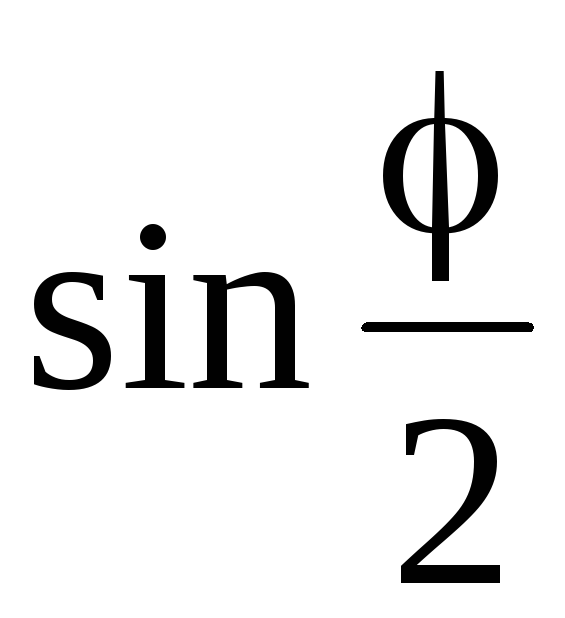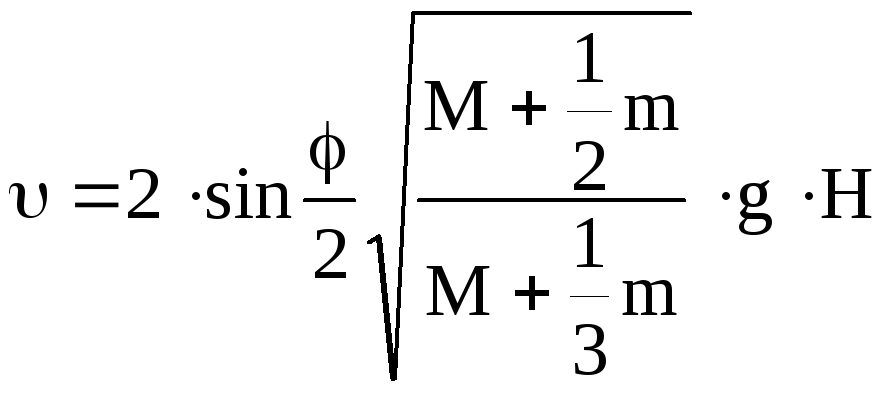
- •Методичні вказівки
- •До лабораторних робіт з фізикИ
- •Механіка. Молекулярна фізика
- •Частина 1
- •1 Елементи теорії похибок
- •1.1 Основні поняття теорії похибок
- •Як правило, визначається у відсотках
- •1.2 Похибки засобів вимірювання
- •1.3 Похибки табличних величин
- •1.4 Правила округлення і виконання наближених обчислень
- •1.5 Похибки прямих вимірювань Похибки прямих вимірювань визначаються за формулою
- •1.6 Похибки непрямих вимірювань
- •1.7 Графічне відображення експериментальних результатів
- •Контрольні запитання
- •Рекомендована література
- •3. Лабораторна робота № 1. Визначення густини тіл
- •3.1 Вступ
- •3.2 Вимірювання і визначення похибок
- •Контрольні запитання
- •Рекомендована література
- •5 Лабораторна робота № 2. Визначення модуля юнга металів
- •5.1 Вступ
- •5.2 Опис установки
- •5.3 Порядок виконання роботи
- •Контрольні запитання
- •Список літератури
- •1. Кучерук і.М. Загальний курс фізики. Т.1. / і.М. Кучерук, і.Т.
- •7 Лабораторна робота № 3. Визначення коефіцієнта внутрішнього тертя методом стокса
- •7.1 Опис установки
- •7.2 Теорія методу Стокса
- •7.3 Порядок виконання роботи (завдання 1)
- •7.4 Порядок виконання роботи (завдання 2)
- •Контрольні запитання
- •Список літератури
- •9 Лабораторна робота № 4.1. Пружний удар куль
- •9.1 Коротка теорія пружного удару
- •9.2 Порядок виконання роботи
- •Контрольні запитання
- •Список літератури
- •10 Лабораторна робота № 4.2. Пружний і непружний удаРи куль
- •10.1 Основні положення
- •10.2 Порядок виконання роботи
- •Контрольні запитання
- •Список літератури
- •12 Лабораторна робота № 4.3. Непружний удар тіл
- •12.1 Коротка теорія непружного удару
- •12.2 Порядок виконання роботи
- •Контрольні запитання
- •Рекомендована література
- •Інструкція з охорони праці № 129 при виконанні робіт в лабораторії кафедри фізики
- •1 Загальні положення
- •2 Вимоги безпеки перед початком роботи
- •3 Вимоги безпеки під час виконання робіт
- •4 Вимоги безпеки після закінчення роботи
- •5 Вимоги безпеки в аварійних ситуаціях
12.2 Порядок виконання роботи
Розрахувати початковий кут відхилення φ = 15+3N у градусах. для першої половини групи, або φ = 3N для другої половини групи. N – номер підгрупи студентів.
Для забезпечення непружного характеру удару на контактуючих поверхнях тіл із пластиліну сформувати невеличку гірку.
Відхилити один із стержнів на розрахований кут φ і відпустити. По шкалі кутів зафіксувати кут відхилення β після удару.
Повторити п.3 ще чотири рази (всього буде 5), слідкуючи, щоб після удару тіла за рахунок деформації пластиліну злипались. Результати вимірювань занести в таблицю 12.1.
Таблиця 12.1
|
№ |
φ |
βі |
Δβі |
Δβі2 |
|
|
|
|
|
1 |
|
|
|
|
|
|
|
|
|
2 |
|
|
| |||||
|
3 |
|
|
| |||||
|
4 |
|
|
| |||||
|
5 |
|
|
| |||||
|
|
|
|
|
|
|
| ||
Розрахувати величини, вказані в таблиці, а також похибку Δβ вимірювання кута β.
За формулою (12.11) знайти відносну втрату механічної енергії, одержану експериментально. При виконанні закону збереження енергії вона повинна дорівнювати теоретичному значенню 0,5 (див. наслідок).
Порівняти значення
 і 2
і 2 .
Якщо закон збереження імпульсу
виконується, то, згідно з (12.9)
та наслідком,
вони повинні бути однаковими.
.
Якщо закон збереження імпульсу
виконується, то, згідно з (12.9)
та наслідком,
вони повинні бути однаковими.Зробити висновок щодо виконання законів збереження імпульсу та енергії.
Контрольні запитання
Що називається ударом?
Який удар називається абсолютно пластичним?
Які системи називаються замкнутими?
Сформулювати закон збереження імпульсу.
Сформулювати закон збереження механічної енергії.
Записати закон збереження імпульсу для центрального абсолютно непружного удару куль.
Записати закон збереження механічної енергії для центрального абсолютно непружного удару куль.
Вивести формули для визначення швидкостей куль після абсолютно непружного удару.
Рекомендована література
1.Зачек І.Р. Курс фізики / І.Р.Зачек І.М. Кравчук, Б.М. Романишин В.М.Габа, Ф.М.Гончар.- Львів: „Бескид Біт”.-2002, С.8-15.-376 с.
2.Трофимова Т.Н. Курс физики. - М.: Высшая. школа., 1990.- С.13-27.- 478 с.
3. Чолпан П.П. Фізика.- Київ: Вища школа 2003. С.50-59.71-74.- 567 с.
4. Бушок Г.Ф. Курс фізики Кн.1 / Г.Ф. Бушок, Є.Ф. Венгер.- К.: Вища школа.-2003.- С.77-88. - 311 с.
Інструкцію склав доцент кафедри фiзики Манько В.К.
Рецензент: старший викладач кафедри фізики Работкіна О.В.
Затверджена на засіданні кафедри фізики,
протокол № 3 від 01.12.2008 р.
13 LABORATORY WORK № 4.3. INELASTIC IMPACT OF BODIES
THE AIM: to study the laws of conservation of mechanical energy and impulse.
INSTRUMENTATION AND APPLIANCES: two metallic cylinders suspended to the light rods, angle scale.
13.1 Short theory of inelastic impact
The impact is the process of final alternation of velocities of bodies in a comparative short time. During perfectly inelastic impact when the forms and the sizes of bodies obtained during deformation remain after the stop of action of forces, perfectly plastic deformation takes place. The kinetic energy of the bodies motion partially transforms into heat and partially into kinetic energy. The system is closed (the work of the external forces is equal to zero) and dissipative. In such systems the law of conservation of the impulse accomplishes, but the law of conservation of mechanical energy doesn’t, because the part of energy converts into non-mechanical energy-heat. But the law of conservation of all kinds of energy for closed systems accomplishes. Let’s examine inelastic central impact (fig.13.1).

Figure 13.1
The bodies move as whole body after the impact, it means that the velocity U of both bodies is the same. Let’s write down the equation of conservation of impulse and energy, taking into consideration that during the plastic deformation educes heat Q:
![]() ,
(13.1)
,
(13.1)
![]() . (13.2)
. (13.2)
If we know masses of the bodies m1 and m2 and velocities V1 and V2 before the impact we can find the velocity U after the impact and the amount of heat Q.
![]() ,
(13.3)
,
(13.3)
![]() .
(13.4)
.
(13.4)
Consequence: If the masses of the bodies are the same and one of the bodies, for example the second is not moving(stable), then after the impact U=0,5v, it means that the velocity is twice reduced and the half of kinetic energy transfers into heat.
![]() .
(13.5)
.
(13.5)
In this work we examined inelastic impact of two bodies with the same mass which are suspended to the rods (fig.13.2). Inclination angles of the rods are measured by the scale. The masses of the bodies M , the rods m and the lengths of the rods L are the same.

Figure 13.2
During the inclination of the rod with the weight to the angle ф, the centre of the body weight lifts for H, and the centre of the weight of the rod for H/2. Their potential energy increases for such value
![]() .
(13.6)
.
(13.6)
At the moment when a body passes low position, that means before the impact this potential energy in accordance to the law of conservation of mechanical energy (if don’t count the resistance of the air and the force of friction suspended), transforms into the kinetic energy of rotating body before the impact
![]() .
(13.7)
.
(13.7)
Where J is the sum of moments of inertia of the weight ML2 (as a material point) and of the rod ⅓mL concerning the point of suspension; ω is the angular velocity of rotation; v is the velocity of the weight before the impact.
After comparing the right parts of equations (13.6) and (13.7), we can find the velocity depending on the inclination angle
 .
(13.8)
.
(13.8)
After the impact the bodies move as whole body. So to find the velocity U and the kinetic energy E after the impact, in formulas (13.7) and (13.8) we should change M and m correspondingly into 2M and 2m, and the angle φ into inclination angle β after the impact
 .
(13.9)
.
(13.9)
![]() .
(13.10)
.
(13.10)
The relative losses of mechanical energy for heat from equations (13.7) ÷ (13.10)
 .
(13.11)
.
(13.11)
13.2 The sequence of performing the work
Count the initial inclination angle by formula φ=15+3N in degrees for the first half of students or φ=3N for the second half of students. N is the number of the subgroup of students.
For supplying an inelastic character of the impact you should form little hill made of plasticine on the interacting surfaces of the bodies.
Incline one of the rods to the counted angle ф and release it. Fix the inclination angle B after the impact by a scale.
Repeat 3d item 4 times (in the whole 5 times), watching that after the impact the bodies stick together with the help of plasticine. Fill in the table with the results of measurements.
Calculate the values filled in the table, and the error β of the measurement of angle β.
Calculate the relative loss of mechanical energy by formula (13.11), obtained experimentally.
Compare the values sin(φ/2) and 2sin(β/2). If the law of conservation of impulse accomplishes then according to the formula (13.9) and consequence, the values of sin must be the same.
Make a conclusion about the accomplishing of the laws of conservation of the impulse and mechanical energy.
Table 13.1
|
№ № |
φ |
βі |
Δβі |
Δβі2 |
|
|
|
|
|
1 |
|
|
|
|
|
|
|
|
|
2 |
|
|
| |||||
|
3 |
|
|
| |||||
|
4 |
|
|
| |||||
|
5 |
|
|
| |||||
|
|
|
|
|
|
|
| ||
Control questions
What is the impact?
What kind of impact is called perfectly plastic?
What kinds of systems are called closed?
Formulate the law of conservation of the impulse.
Formulate the law of conservation of mechanical energy.
Write down the law of conservation of the impulse for central perfectly inelastic impact of the balls.
Write down the law of conservation of mechanical energy for central perfectly inelastic impact of the balls.
Deduce a formula for determination the velocities of balls after perfectly inelastic impact.
Literature
1.Зачек І.Р. Курс фізики / І.Р.Зачек І.М. Кравчук, Б.М. Романишин В.М.Габа, Ф.М.Гончар.- Львів: „Бескид Біт”.-2002, С.8-15.-376 с.
2.Трофимова Т.Н. Курс физики. - М.: Высшая. школа., 1990.- С.13-27.- 478 с.
3. Чолпан П.П. Фізика.- Київ: Вища школа 2003. С.50-59.71-74.- 567 с.
4. Бушок Г.Ф. Курс фізики Кн.1 / Г.Ф. Бушок, Є.Ф. Венгер.- К.: Вища школа.-2003.- С.77-88. - 311 с.
Authors: S.P. Lushchin, the reader, candidate of physical and mathematical sciences.
Reviewer: S.V. Loskutov, professor, doctor of physical and mathematical sciences.
Approved by the chair of physics. Protocol № 3 from 01.12.2008 .
